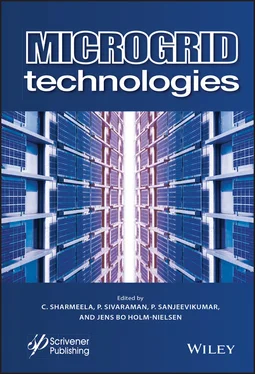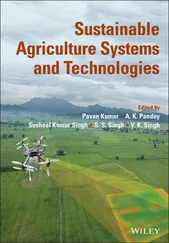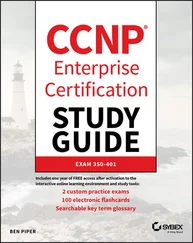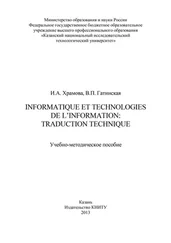425 419
426 420
427 421
428 422
429 423
430 424
431 425
432 426
433 427
434 428
435 429
436 430
437 431
438 432
439 433
440 434
441 435
442 436
443 437
444 438
445 439
446 440
447 441
448 442
449 443
450 444
451 445
452 446
453 447
454 448
455 449
456 450
457 451
458 452
459 453
460 454
461 455
462 456
463 457
464 458
465 459
466 460
467 461
468 462
469 463
470 464
471 465
472 466
473 467
474 468
475 469
476 470
477 471
478 472
479 473
480 474
481 475
482 476
483 477
484 478
485 479
486 480
487 481
488 482
489 483
490 484
491 485
492 486
493 487
494 488
495 489
496 490
497 491
498 492
499 493
500 494
501 495
502 496
503 497
504 498
505 499
506 500
507 501
508 502
509 503
510 504
511 505
512 506
513 507
514 508
515 509
516 510
517 511
518 512
519 513
520 514
521 515
522 516
523 517
524 518
525 519
526 520
527 521
528 522
529 523
530 524
531 525
532 526
Scrivener Publishing
100 Cummings Center, Suite 541J
Beverly, MA 01915-6106
Publishers at Scrivener
Martin Scrivener ( martin@scrivenerpublishing.com)
Phillip Carmical ( pcarmical@scrivenerpublishing.com)
Edited by
C. Sharmeela, P. Sivaraman,
P. Sanjeevikumar,
and
Jens Bo Holm-Nielsen

This edition first published 2021 by John Wiley & Sons, Inc., 111 River Street, Hoboken, NJ 07030, USA and Scrivener Publishing LLC, 100 Cummings Center, Suite 541J, Beverly, MA 01915, USA
© 2021 Scrivener Publishing LLC
For more information about Scrivener publications please visit www.scrivenerpublishing.com.
All rights reserved. No part of this publication may be reproduced, stored in a retrieval system, or transmitted, in any form or by any means, electronic, mechanical, photocopying, recording, or otherwise, except as permitted by law. Advice on how to obtain permission to reuse material from this title is available at http://www.wiley.com/go/permissions.
Wiley Global Headquarters111 River Street, Hoboken, NJ 07030, USA
For details of our global editorial offices, customer services, and more information about Wiley products visit us at www.wiley.com.
Limit of Liability/Disclaimer of WarrantyWhile the publisher and authors have used their best efforts in preparing this work, they make no representations or warranties with respect to the accuracy or completeness of the contents of this work and specifically disclaim all warranties, including without limitation any implied warranties of merchantability or fitness for a particular purpose. No warranty may be created or extended by sales representatives, written sales materials, or promotional statements for this work. The fact that an organization, website, or product is referred to in this work as a citation and/or potential source of further information does not mean that the publisher and authors endorse the information or services the organization, website, or product may provide or recommendations it may make. This work is sold with the understanding that the publisher is not engaged in rendering professional services. The advice and strategies contained herein may not be suitable for your situation. You should consult with a specialist where appropriate. Neither the publisher nor authors shall be liable for any loss of profit or any other commercial damages, including but not limited to special, incidental, consequential, or other damages. Further, readers should be aware that websites listed in this work may have changed or disappeared between when this work was written and when it is read.
Library of Congress Cataloging-in-Publication Data
ISBN 9781119710790
Cover image: Solar Panel Technology | Vtt Studio | Dreamstime.comCover design by Kris Hackerott
Set in size of 11pt and Minion Pro by Manila Typesetting Company, Makati, Philippines
Printed in the USA
10 9 8 7 6 5 4 3 2 1
Power electronics—as a broader technology—fits into modern digital power e-grid, transport, and renewable energy. Editing a book on the current requirements and prospective scope is a challenge to qualify and accomplish according to the market requirements and end-user benefits. It is my pleasure to write a foreword to this book edited/written by my colleagues from Aalborg University, Esbjerg, Denmark and Anna University, Chennai, India—“Microgrid Technologies,” which is giving viable solutions to the demands. With my read-through of the book, I have identified that the content is inventive and enriched with techno-fiscals, a model for upcoming activities for the academic, researchers, and industrialists, from whom we hope the microgrids will be adapted in their work.
Microgrids are a digital power electronics innovation in new energy operation for electrical energy management with grid-connected or island mode configuration within micro-, macro-, or even nano-energy requirements. A methodical manner and straightforward presentation with all prospects, this book is made up of architectures, theories of AC and DC microgrids, sociocommercial features, energy stream and operation, renewable integration, control techniques, application of artificial intelligence, and analytical simulation examples of microgrid technologies. It is a unified contribution by international authors from Europe, India, Canada, South Africa, Egypt, and Thailand.
Critical Subjects Covered in This Volume
The state of the art in renewable energy system-based microgrid includes grid-connected and island structures, distributed energy storage schemes, energy and power management, load flow evaluation, protection, and coordination.
Digital techniques, Internet of Things (IoT), Artificial Intelligence (AI), communications, etc. are also included.
Detailed studies culminate with the analytical result for frequency regulation in a low inertia system, PSO algorithm-based UPQC controller, and power quality enhancement too.
Modeling of smart meters using the most recent technologies of “game theory,” “relaxation algorithm,” “bi-level algorithm,” and “Nikaido–Isoda formulation” for energy exchange centers and bidding strategies—a scope/look to the future digitalized microgrid in renewables is also an interesting prospect of the book.
From an overall perspective, this book presents the fundamental concepts of modernizing the microgrids as a thirst area of more ample opportunity, and contributes to original research study findings. Therefore, this book is a handy source, offering new interest for electrical power engineers and renewable operators/state regulators.
This book is a strong addition for readers to enjoy sharing proficiency in the exciting field of microgrids. Finally, I congratulate the Editors, Contributors, and the Wiley-Scrivener Publishing, USA, for the work to bring this into reality with prompt and sharp-quality delivery.
Читать дальше












